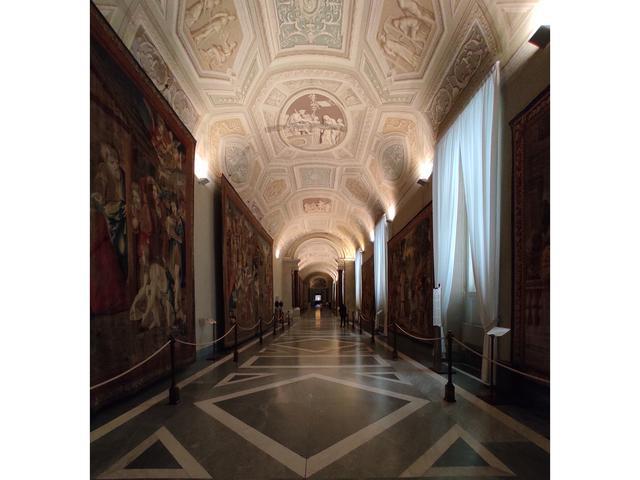Tapestry Gallery

The Tapestry Gallery, located within the Vatican Museums, is a true treasure trove of historical and artistic significance. Tapestries, also known as "Arazzi" in Italian or "tapetes" in Spanish, were highly sought after during the 16th century for their dual purpose of decoration and insulation. The term "Arazzi" originates from the French city of Arras, a prominent hub for tapestry production in the 14th and 15th centuries. On the other hand, "tapete" comes from the Latin word "tapestry," highlighting the rich cultural and linguistic influences behind these exquisite works of art.
The Tapestry Gallery showcases a stunning collection of Flemish tapestries, originating from workshops in Belgium and Holland. One of the most notable sets of tapestries on display are the Acts of the Apostles, commissioned by Pope Clement VII and designed by Raphael's students. These intricate tapestries were originally intended for the Sistine Chapel, where they were exhibited during religious festivities. The detailed scenes depicted in the tapestries offer a glimpse into the religious and artistic fervor of the Renaissance period.
As you explore the Tapestry Gallery, you will encounter a diverse array of tapestries that narrate various historical events and religious themes. On the left side of the room, visitors can admire tapestries depicting the Epiphany of the shepherds, the transfiguration, the resurrection, and other significant biblical moments. Moving to the right side, tapestries portraying the life of Pope Urban VIII, including events from his papal reign and interactions with notable figures like Countess Matilda of Canossa, offer a deeper insight into the political and religious dynamics of the time.
The intricate craftsmanship and vibrant colors of the tapestries in the gallery are a testament to the skill and dedication of the artisans who created them. Each tapestry tells a unique story, inviting visitors to immerse themselves in the rich tapestry of history and artistry woven into these magnificent works. Whether you are a history enthusiast, art lover, or simply a curious traveler, the Tapestry Gallery at the Vatican Museums promises a captivating journey through the past, where threads of tradition and creativity intertwine to create a masterpiece of cultural heritage.
© ChatGPT 3.5
*This collection of tapestries can be considered one of the oldest in existence.
*Although it has been diminished over the years due to the wear and tear of time and Napoleonic looting.
*This collection is achieved thanks to the Popes, who, passionate about collecting these precious objects, commissioned entire series.
*Each tapestry took years to make and was made by the best artisans of that time, including Flanders.
*They were made with silk, wool and gold and silver threads.
*The Tapestry of Christ is one of the most representative because its making managed to create a mobile perspective effect, which makes it seem like it follows you with its gaze.
*The passion of the popes for these tapestries even led to the founding in the 18th century of a factory in the Hospice of San Michele in Rome.